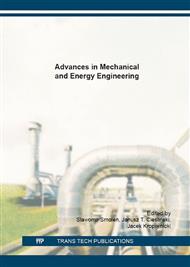p.71
p.83
p.92
p.104
p.112
p.117
p.126
p.144
p.151
Development of an Aeroelastic Flap to Increase the Aerodynamic Efficiency of a Wind Turbine’s Rotor Blade
Abstract:
Horizontal-axis wind turbines are sophisticated technical constructions that require modern design methods for further improvement and higher economic output. Thorough understanding of the whole turbine and its components is indispensable for this aim. The technological development in the last decades indicates the progress in this area and shows the potential of optimizations due to the improvement of rotor blade aerodynamics by additional aerodynamic devices. In this project the effect of an aeroelastic flap mounted on the trailing edge of a rotor blade on energy yield was investigated. For this purpose a flexible flap of fiberglass reinforced plastic for the profile at 70% of the rotor blade span has been designed for the trailing edge and analyzed using a 2-way fluid-structure-interaction simulation. In the first step the simulation is reduced to a two-dimensional investigation using the cross-section at 70% diameter of the rotor blade. Compared to an unmodified profile, the aeroelastic flap increases the lift-to-drag-ratio of the profile in an angle of attack range between 3.5° to 9.5°. The aeroelastic flap has a positive effect on the glide ratio, similar to a non-elastic, static flap.
Info:
Periodical:
Pages:
112-116
Citation:
Online since:
April 2016
Price:
Сopyright:
© 2016 Trans Tech Publications Ltd. All Rights Reserved
Share:
Citation:


